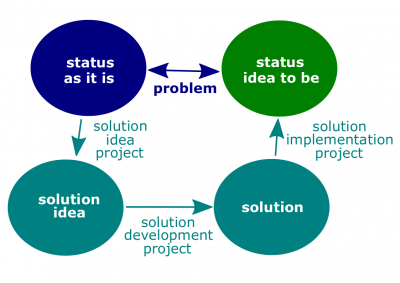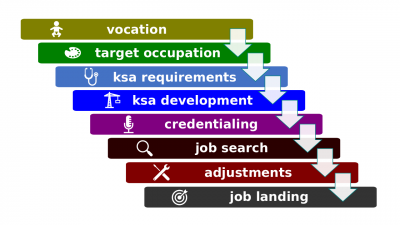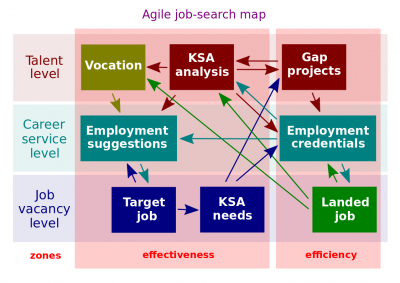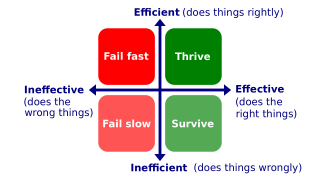Career Essentials
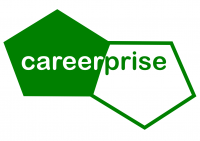
Career Admin Essentials is the first presentation in the Introduction to Careers lecture. The lecture itself is the fourth in WorldOpp Orientation. Consequently, the Orientation is the first stage of WorldOpp Pipeline.
This wikipage presents its full script and those test questions that are related to that presentation.
Contents
Script
The video of the presentation is published at https://youtu.be/Lqz0dcn9CRo (6:14). Here is its full text.
Overview
- Welcome to Career Admin Essentials. In this brief presentation, we are going to define career administration and take a look at those actions that employment candidates can take in order to land promising jobs. Let's takeoff.
What career administration is
- Career administration is a set of endeavors undertaken in order to administer one's career. Career can be defined as a long-term occupation and administration in this case is being in charge of that. Vocation is another key term related to this topic. It is a strong feeling called "calling" of suitability for a particular career. Let's assume that one needs to like what he or she does for a long time.
Job market
- Every employment is the match between employers and employees. Employees offer their talents and employers offer jobs. Talents are on one side and job vacancies are on another side.
- On a casual market, products are rarely sold without intermediaries. In most cases, something or someone should be in between employers and employees. That is why career service level is added. It includes everything and everyone who can help to match these two parties.
- Someone or something should help you to match to your target job, sometimes it is carrier service providers, sometimes it could be you, sometimes it could be employer. Even if talents and employers do all career services without hiring third parties, they still need to use some tools and rely on some information. If you are a job seeker without direct connections, you can not in any meaningful way to know what jobs are available without some sources of information.
- So, we can identify three groups of actors in career administration. One group is owners of talents -- employment candidates. Another group is employers -- owners of job vacancies. The middle group is market intermediaries -- workforce service providers, informational resources, just friends, et cetera.
Job seeker vs entrepreneur
- Every career can also be defined as an enterprise which objective is one's employment. We may easily compare every person who is looking for a job or may consider looking for a job with a business in search for its customers. That business has the name, which is the person's name, it has some weaknesses, strengths, threats, and opportunities, as well as advantages and disadvantages. Eventually, that person's time has some price too. This price is commonly called employee compensation.
- If one is looking for a job, he or she is an entrepreneur. Employment candidates are self-employed and, in most cases, the goal of the business is to sell their time. Whatever is good for an enterprise is good for employment candidates. Career administration can be viewed as no more than an application of business administration to one's career.
Landing a job as a project
- Let's think about landing a job as a project. If you are not familiar with that term, a project is delivering something new. Landing a job can be called a job project. Let's take a look at the available illustration. There are two statuses -- one as it is and another is to be. The difference between these two is called a problem to be solved. There should be some solution, but usually that solution needs to be yet identified. For instance, you need a well-paying job, but you don't know yet how this job would look like and what it would take to land it. Your job project would include the whole process.
Job search as a waterfall
- There are several models of administering projects. A traditional one is called the career waterfall and many career councilors may recommend you to take this route.
- Waterfall refers to a sequential process where progress is seen as flowing steadily downwards through the phases. These phases may vary, but often consist of, a, discovering one's vocation, bee, suggesting one's target industry and or occupation, see, identifying work-related competence needed for a particular position, dee, development of one's KSAs, ee, development one's employment credentials, eff, job search, gee adjustments to the job market, and or, aitch, landing one's job in the target occupation and/or target industry.
- Let's add some example. Meet Liza, -- that is a real person, but the name is changed -- who believed that management is her vocation. Her parents believed in that too. She attended a college for 4 years to earn an academic degree, but no one wanted to hire her because of her lack of work experience. She started working as a sales representative and stays in that occupation for a while. She doesn't regret about her 4 years in a college, and says that it was joyful experience, but she does not manage anyone in her occupation.
- That example is not everyone's case, but there is no way that everything in that 2-6 years project would go as planned and a great chunk of time -- and often money -- wouldn't be wasted.
Agile job search
- Agile methodology is another method of administering projects. An Agile project is usually completed in several iterations or development cycles. The results of each iteration shall be used to setup objectives for other iterations.
- If Liza in the example above used Agile, she would have started gaining work experience as soon as she got basic skills and would adjust her academic goals based on that.
Agile model for a career
- The goal of the Agile career-administration model is navigation in one's job search. We can see the talent level is on the top, the career service one in the middle, and the job vacancy level is on the bottom.
- Let's go over this model. Let's imagine someones who have some vocation, which is basically calling. Assume that they like to work with numbers and track activities. They may dream to do that for a long time if that pays well. Even if they haven't identified their calling or callings, they may have some KSAs or knowledge, skills, and abilities. Not to start from scratch, if they know like 50% of accounting, maybe it makes sense to do 50% more and to land a job as accountants to test whether accounting fits their vocation.
Employment suggestions is the place which can match you to your target job. These target jobs have some KSA`s, they have some requirements. An accounting job may have some requirements that a person needs to know, for instance educational industry, be familiar with educational industry, this person needs to know debits, credits, income statements and balance sheets. So, it will be a new KSA. These KSA`s can be compared with those KSA`s which you already have and the gaps can be found. For instance, you know debits, credits but you have never done income statements, so in this case some gap projects maybe launched so you can start to concentrate on balance sheet or income statements and whatever comes it goes to employment credentials. Usually someone needs to credential you in order to get a job, so any recruiter will look for your credentials, you cannot say you know everything in a particular field, someone needs to prove it. Sometimes some employment credentials include academic degrees, some are not. When employment credentials are set up basically it can lead to land a job and interview is another credential too.
In the next we will go over employment credentials in better detail and take a look at workforce service providers and hopefully we will be ready to go to introduction to education.
- Effectiveness. The degree to which an enterprise does those activities that result in achieving its goals. In other words, effectiveness is the measure of how an enterprise meets the needs of its clientele or customers.
Efficiency is doing things right; effectiveness is doing the right things. -- Peter Drucker, management consultant
- Efficiency. The degree to which an enterprise gets the most outputs from the least amount of inputs.
- Effectiveness. The degree to which an enterprise does those activities that result in achieving its goals. In other words, effectiveness is the measure of how an enterprise meets the needs of its clientele or customers.
Efficiency vs effectiveness]]
Summary
- This concludes the Career Admin Essentials presentation. We have defined career administration and taken a look at vocations and careers. We have also used the Agile career-administration model to go over endeavors that employment candidates may undertake in order to land their jobs. The special stress was made on the difference between efficiency and effectiveness in career administration. If you haven't done yet so, you are now welcome to move to Employment Credentials.
Quiz questions
- Every statement below is split into one true and one false question in the actual exam.
See also
- Employment Credentials. The second presentation in Introduction to Careers.
- Recruiters' Essentials. The last presentation in Introduction to Recruitment.

